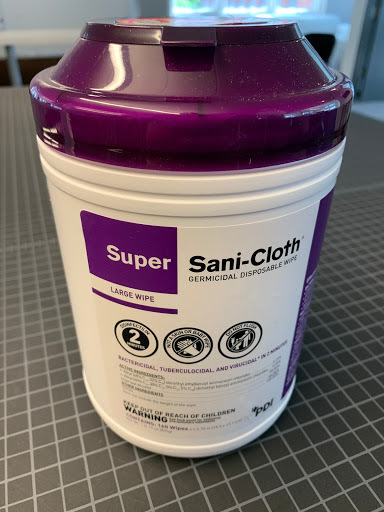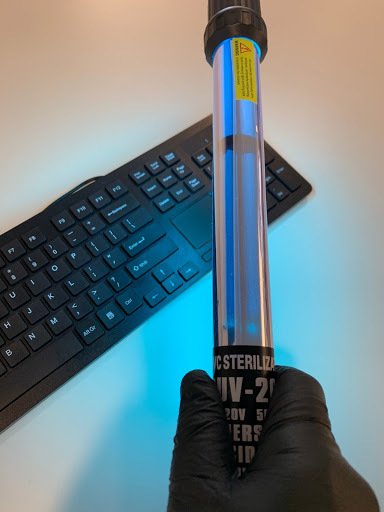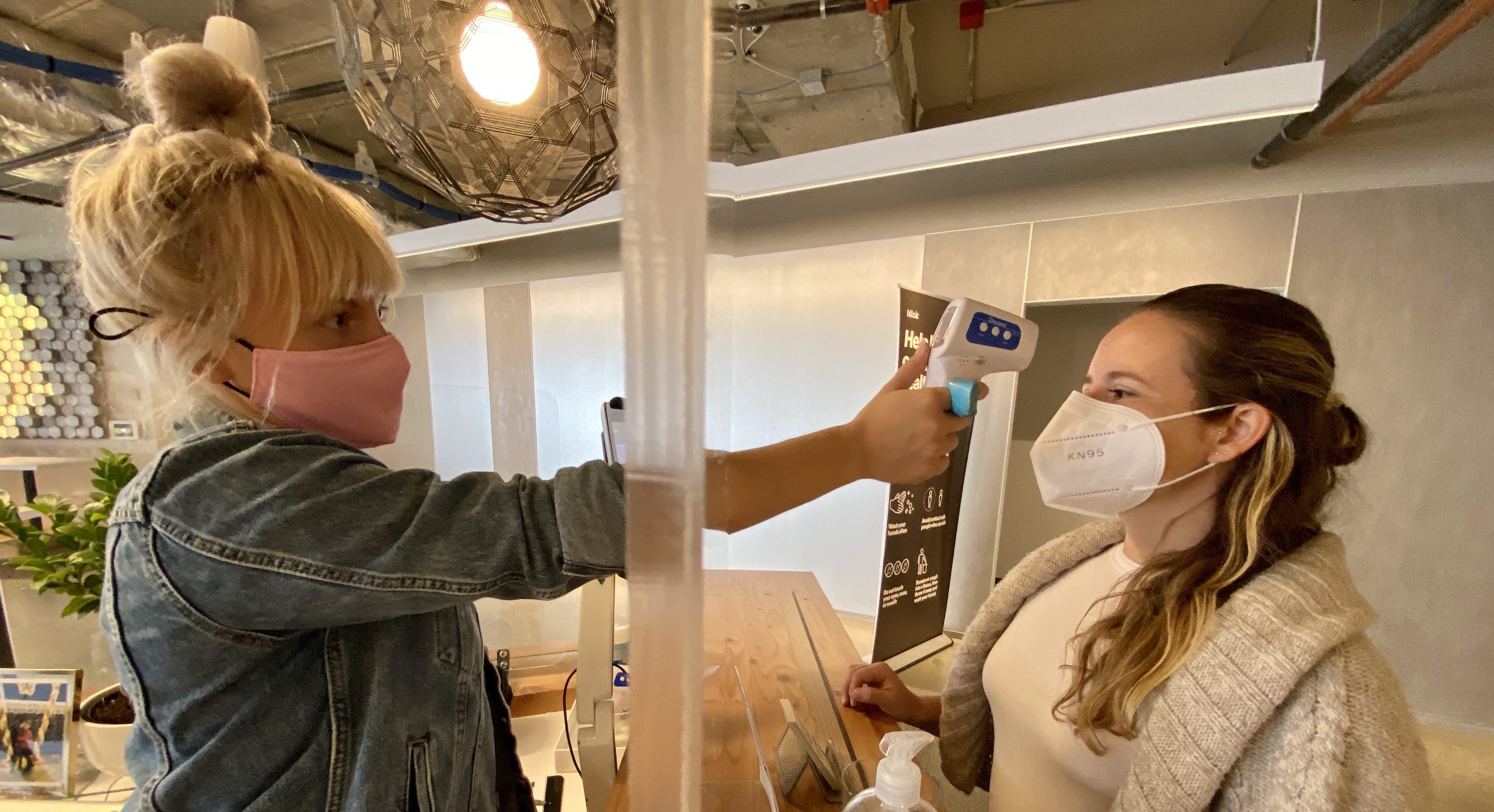
Note: This article was originally published May 5, 2020. It was updated March 19, 2021 to reflect current protocol. Our Seattle user experience research labs are open with enhanced safety in place. Our COVID-19 health and safety protocols have been in place since July 2020. Please see these articles for additional reading:
- Blinker Health and Well-Being
- Blink’s protocols and procedures for November’s new COVID-19 restrictions
- Blink’s Coronavirus Update (COVID-19)
COVID-19 has changed how we approach user research. Like many of our peers, we have been able to continue much of our work from home during the COVID-19 shelter-in-place mandates. Our teams have adapted to this temporary reality, and we have conducted much of our planned research using remote methods. But some research questions can’t easily be answered remotely, and safely returning to our user experience research labs was a priority.
"How do you ensure participant health and safety in light of COVID-19?”
One of our long-term consumer electronic hardware clients posed this question. While some research into user needs can be done remotely, some studies needed to answer questions about fit and finish, ergonomics, and subtle feedback that need to be investigated in person in our labs. We got to work modifying our spaces and procedures to ensure the health and safety of our clients, staff, and research participants.
Blink has 20 years of experience in designing, building, and optimizing UX research labs. We also have connections and partnerships with some of the most innovative thinkers and technologists across various industries. In collaboration with colleagues within and outside of Blink, plus a fair amount of experimenting at home, we’ve established protocols for moderated usability testing in our user research labs that will be followed until COVID-19 is no longer a concern.
First and foremost, Blink is committed to the health and safety of our research participants, employees, clients, and partners. We continue to monitor information from the CDC and will follow the guidance of state and local governments in each of our research locations. We regularly review our policies and procedures to adapt them to this evolving situation.
Blink has implemented a multifaceted approach to maintaining the health and safety of post-COVID-19 in-person research. This approach includes modified research procedures, screening procedures, social distancing, personal protective equipment (PPE), cleaning and disinfection of facilities, and sanitization of all hardware.
Listening to the local experts
COVID-19 risks vary tremendously from location to location around the globe. We have offices in four states, and each one requires specific treatment based on the recommendations of state and local health officials.
Remote whenever possible
We believe the COVID-19 pandemic will influence how people make decisions about the activities they do for months, if not years, to come. Remote research methods are the lowest-risk option for participants and researchers, so we will use them whenever possible. Remote testing is a great option for much of the qualitative research our UX researchers recommend.
Minimizing risk through participant screening
Blink has adopted a screening process for all participant recruiting for in-person research at any facility we use that includes self-reported screening questions specific to COVID-19 health and safety. These screener questions address self-reported symptoms, possible exposure, and past travel risk (defined by travel to locations that haven't yet reached the Center for Disease Control’s Phase 3 gating criteria). We ask participants these questions during the initial phone screens and then again upon their arrival at the research facility.
Check-in procedures
In addition to verifying each participant’s identity and answers to the screening questions, we ask participants to opt in to contactless temperature checks. Our facility hosts perform these checks with a simple infrared thermometer. It has long been our policy to empower our staff and clients to quickly dismiss any participant who we feel may present a risk to health and safety, and that continues in this period of heightened health and safety awareness.
PPE
Blink requires participants and staff to wear, at minimum, KN95-rated face masks, which we provide. We don’t want to reduce the supply of the N95 masks, which healthcare workers badly need, and the KN95 masks are nearly as effective.
Research facility modifications
Blink's research facilities support social distancing by default. This includes adhering to the following standards:
- Participants will not co-mingle while waiting for research sessions.
- Food and beverage will be limited to single-serve, individually packaged products.
- Participant group size will follow the guidelines of state and local governments.
- Any notepads, pens, and pencils will be single-use and disposed of after each session.
Moderation via robotic telepresence
We have placed fixed telepresence robots in our labs so that our teams can moderate sessions from outside the lab space. Moderators may participate from another room, another Blink location, or their home. These devices allow for eyes and ears in the research facility, with the ability to pan and zoom for good viewing of the research activities.
We have selected fixed telepresence robots to keep the participant distraction to a minimum. In some ways, this is the modern equivalent of the old usability lab intercom—except with today’s technology, the user can see and hear, as well as pan and zoom.
One unique and compelling feature of this solution is that the researcher can move the robot slightly to indicate their engagement with the participant. Even a small turn toward what they are talking about breaks down the barrier that exists in typical remote sessions.
Cleaning and disinfection

Regularly cleaning our labs, observation rooms, and shared spaces has always been a part of Blink’s protocol. Currently, we clean all surfaces with a CDC-approved cleaner after each session.
When possible, each participant uses disposable covers for things such as VR headsets, and we discard them after every session.

Some delicate hardware can’t be cleaned easily with liquid solutions, so we have outfitted our labs with UV-C sanitizers. These powerful lights require safety precautions such as glasses and gloves, but they have been shown to be very effective against coronaviruses. Be cautious of the wave of UV-C equipment that floods the market. We test all of our UV-C equipment with a calibrated, scientific-quality UV-C light meter to ensure that our equipment is working effectively. This meter also allows us to identify the time required for each device to inactivate and decontaminate.
UV-C is not an ideal solution for some of the sensitive optics we test. We are currently working with a partner who is doing material studies and developing an ozone gas system designed specifically for electronics.
Our commitment
We keep our clients’ user research needs top of mind during COVID-19. Blink is committed to working closely with project stakeholders to develop safety protocols that meet their specific needs and provides protection for the health and safety of our staff and user research participants. We are so glad our research team has been able to adapt our market research methodology for lockdown, and to make user interviews and usability testing safe.
If you have a question, comment, or suggestion about our protocols, please let us know.
